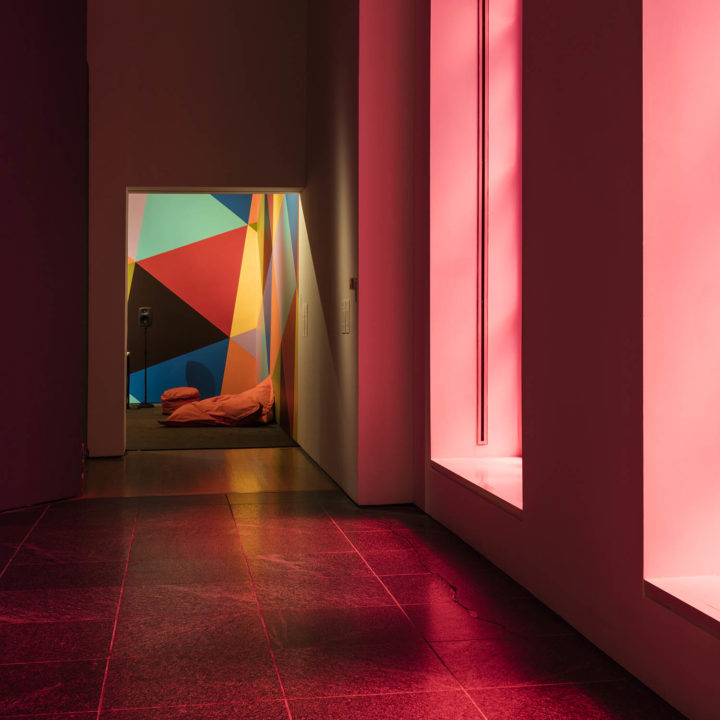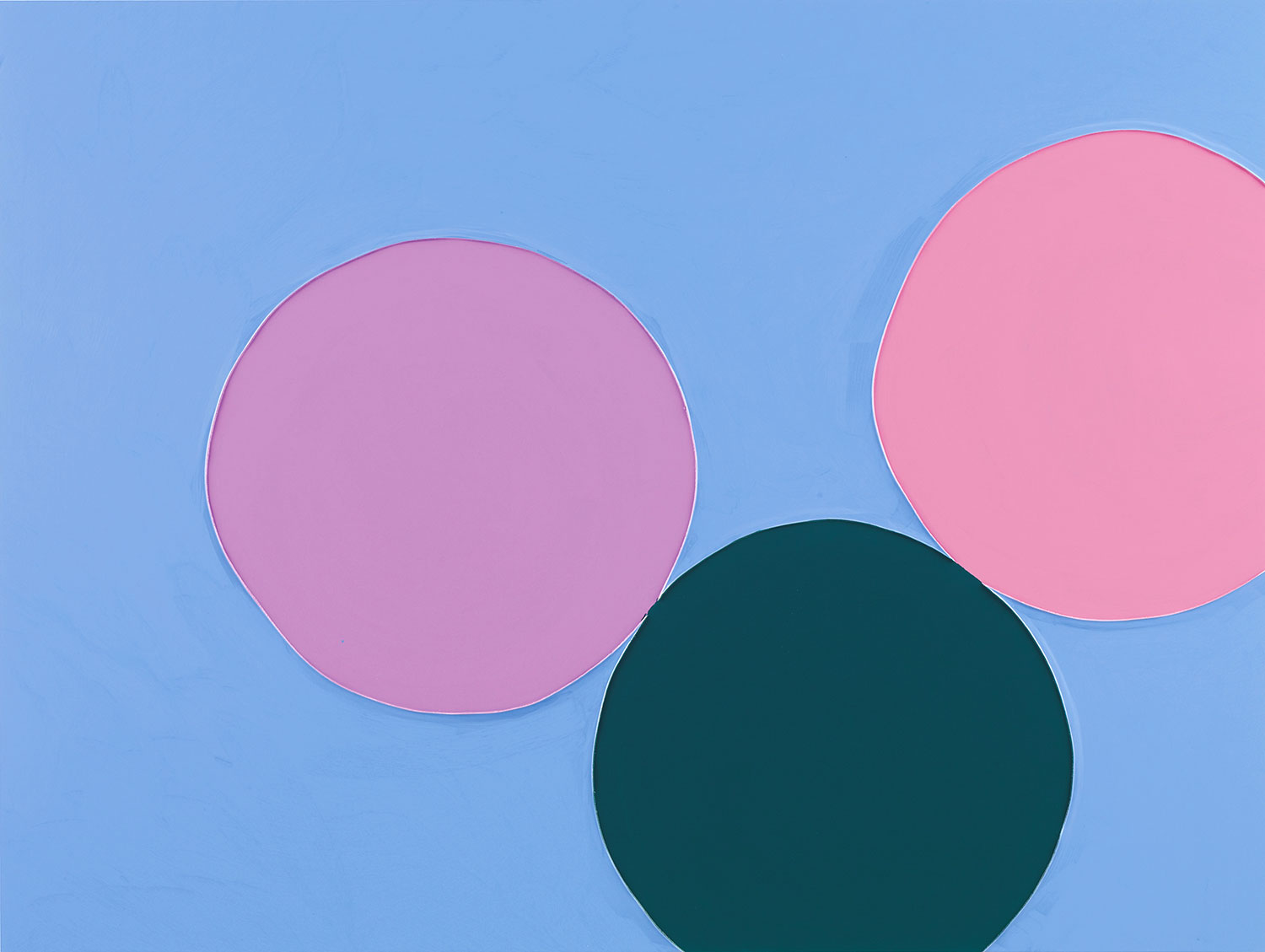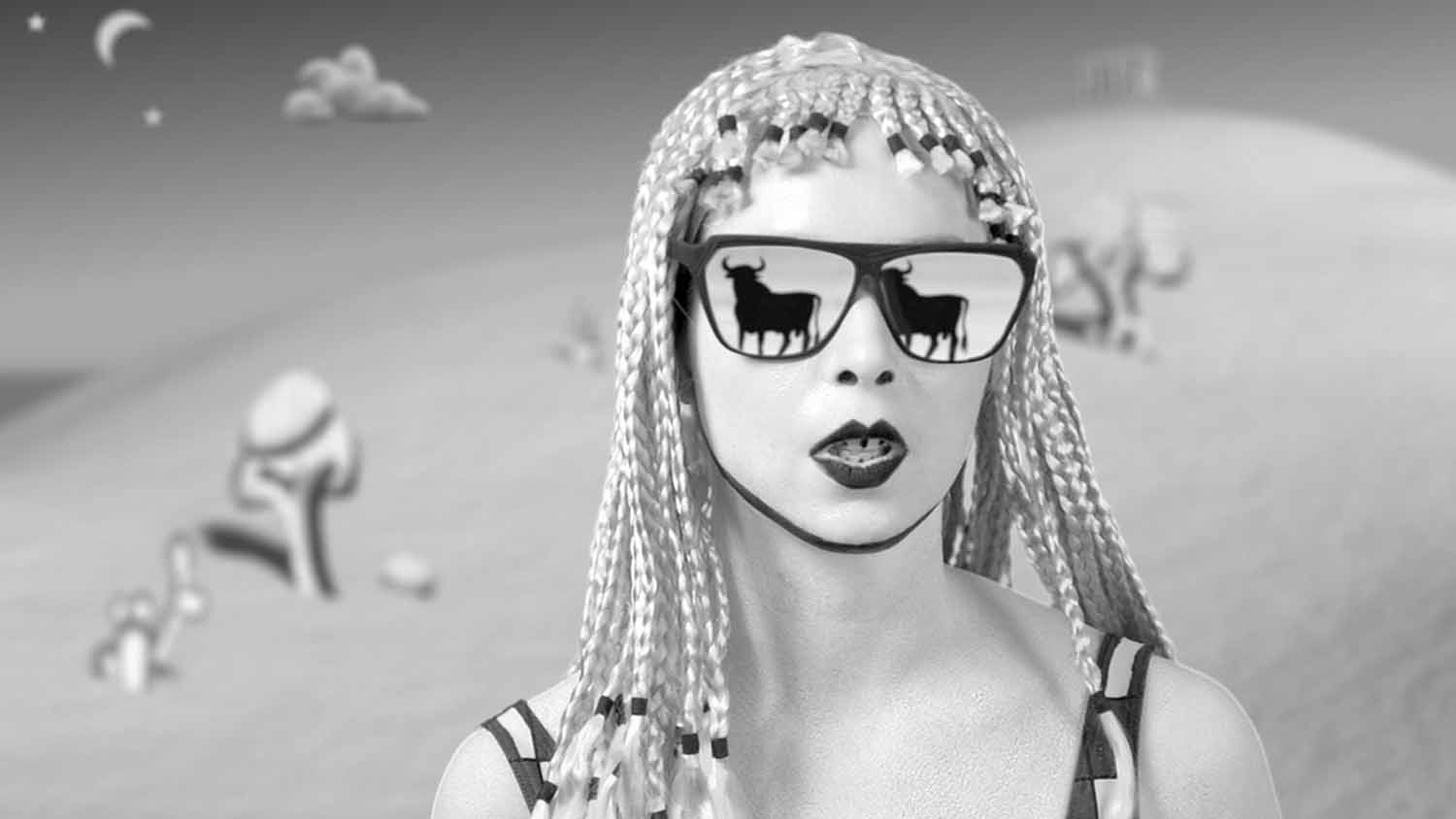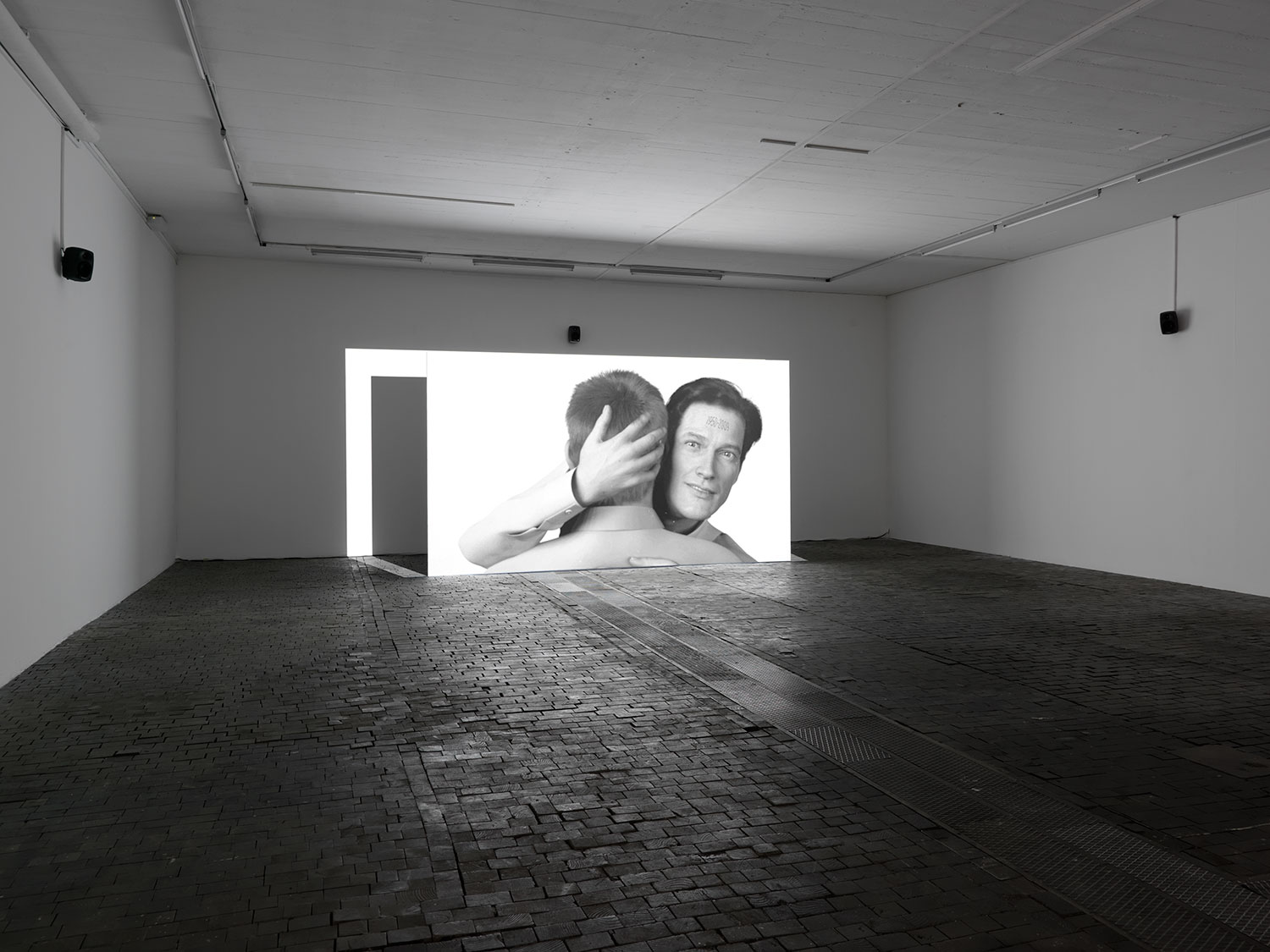Fifty years after the fact, the utopian theater of Expo 67 — which welcomed an estimated fifty million visitors to the multilingual metropolis of Montreal — betokens a deferred promise of technological prosperity and global unity. Amid Canada’s troubled sesquicentennial celebrations, there is an understandable temptation to look back at the World’s Fair with nostalgia.
Instead, the nineteen works selected by cocurators Lesley Johnstone and Monika Kin Gagnon draw attention to fissures in the fair’s familiar image of geodesic uniformity.
Standout works include Omaskêko Cree artist Duane Linklater’s reimagining of a mural that once graced the Indians of Canada Pavilion. Long attributed to Norval Morrisseau, it was actually executed by an assistant due to government censorship of the indigenous artist’s candid depiction of a breast-feeding mother earth. Jacqueline Hoàng Nguyễn casts a critical glance at Canada’s vaunted history of multiculturalism, deftly weaving archival footage of an unlikely centennial project in small-town Alberta that greeted “alien” visitors with the world’s first UFO landing pad into an otherworldly allegory of the country’s fraught relationship with terrestrial migrants.
Leisure (Meredith Carruthers and Susannah Wesley) reconstructs an experimental children’s play area designed by Canadian landscape architect Cornelia Hahn Oberlander, whose tiny utopia has been unjustly overshadowed by the fair’s trademark multiscreen environments. Cheryl Sim revisits the futuristic apparel sported by Expo hostesses as a screen for multivalent desires. David K. Ross’s drone-mounted camera in As Sovereign as Love (2017) retraces the one-time trajectory of the fair’s dismantled mini-rail. Present-day barriers in its aerial itinerary poignantly mark points of rupture between the utopian geography conjured by Antoine de Saint-Exupéry’s Terre des hommes, which inspired Expo’s anthropocentric theme, “Man and his World,” and a site irrevocably transformed by time’s passage.




